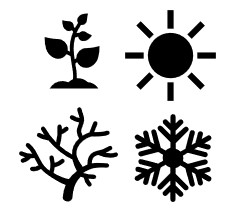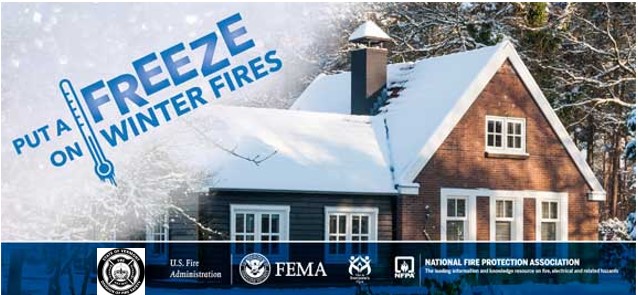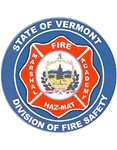 Each season of the year brings with it changes in the weather and in our day-to-day activities. Warmer weather during the spring and summer months coaxes many people outside to participate in activities like grilling swimming, boating and gardening. The cooler temperatures of fall and winter, on the other hand, encourage many people spend more time in indoors, with increasing the use of electrical and heating systems. the holidays are a time when hectic activity distracts many people’s attention from fire safety. Holiday decorations, Trees, lights, candles, cooking, and wood stoves all produce extra fire hazards in our homes.
Each season of the year brings with it changes in the weather and in our day-to-day activities. Warmer weather during the spring and summer months coaxes many people outside to participate in activities like grilling swimming, boating and gardening. The cooler temperatures of fall and winter, on the other hand, encourage many people spend more time in indoors, with increasing the use of electrical and heating systems. the holidays are a time when hectic activity distracts many people’s attention from fire safety. Holiday decorations, Trees, lights, candles, cooking, and wood stoves all produce extra fire hazards in our homes.
The type of fire hazards you may be likely to encounter changes with the seasons. Stay focused on safety throughout the year by reviewing the common safety tips and information provided for each season.
Now is the Time to Prepare for Winter Weather
Home fires occur more in the winter than in any other season, and heating equipment is involved in one of every six reported home fires, and one in every five home fire deaths. There are a few simple steps you can take now to prepare.


Smoke and CO Alarms
- Working Smoke and CO alarms save lives, cutting the risk of dying in a home fire in half. Smoke alarms should be installed and maintained in every home.
- Test smoke alarms at least once a month using the test button.
- Make sure everyone in the home understands the sound of the smoke alarm and knows how to respond.
- Smoke alarms with non-replaceable (long-life) batteries are designed to remain effective for up to 10 years. If the alarm chirps, warning that the battery is low, replace the entire smoke alarm right away.
- For smoke alarms that do not have non-replaceable (long-life) batteries, replace batteries at least once a year. If the alarm chirps, replace only the battery.
Heating
- Keep anything that can burn at least three feet from heat sources.
- Never leave a space heater unattended. Turn it off when leaving a room or sleeping.
- Keep electric heaters away from curtains and furniture, and do not use for drying clothes. Always unplug when you go out or go to bed.
- Never plug a space heater into an extension cord.
- Never use a cooking stove to heat your home or dry clothes.
- Have a qualified service professional inspect your heating system and chimney annually.
- Dispose Wood Ashes Safely Dispose of wood ashes in a metal container that can be tightly closed, douse with water, place the closed container outside your
home away from wood decks or buildings or other combustible materials.
- Check the vents for your heating system to make sure they are not blocked by snow; take a close look at direct vents that are located lower down on walls. A blocked vent can lead to Carbon Monoxide backing up into your home.
Prevent Frozen Pipes
- Make sure your pipes are insulated.
- Open kitchen and bathroom cabinet doors to allow warmer air to circulate around the plumbing. Be sure to move any harmful cleaners and household chemicals up out of the reach of children.
- If your pipes freeze, know where the water shut off is
- Never use a torch or other open flame to thaw the pipes out. A blow dryer is one safe way to take care of the problem.
Generator Safety
- Always read and follow all manufacturer operating instructions.
- Operate portable generators only in dry areas outdoors, in well-ventilated areas away from all doors, windows, vents, and other building openings to prevent exhaust fumes from entering the home.
- Never attach a temporary generator to a circuit breaker, fuse, or outlet. Generators should be wired into a house by a qualified electrician using a transfer switch in order to prevent feeding electricity back into overhead power lines.
- If you are using a portable generator, make sure you have battery operated carbon monoxide (CO) alarms or plug-in CO alarms with a battery backup in the home.
- Check the vents for your heating system to make sure they are not blocked by snow; take a close look at direct vents that are located lower down on walls. A blocked vent can lead to Carbon Monoxide backing up into your home.
Cleaning Exits and Snow Accumulations on Roofs
- When you go to work, check to see if the emergency exits are clear if you smell unusual orders or hear strange sounds that might be a clue to a possible problem, let someone know.
- During heavy snow events inspect barns and other buildings for signs of wreaking or collapse. Utilize safe practices when removing snow buildup on roofs.
- The removal of snow accumulations on roofs, which will take the weight off the roof, is the best way to prevent a loss. It is important to follow proper snow-removal procedures. A plan should be developed based on your building’s layout. Improper snow removal can create undesired loading on a roof.
Follow these procedures to properly remove snow from your roof:
1. Use a snow roof rake if at all possible. This allows you to be safely on the ground in a safe place.
2. Use fall protection equipment when employees are working on a roof.
3. If ladders are used, locate and secure them so they do not fall.
4. Drifted snow should be removed first, which will generally be on lower roofs. Drifted snow can also occur around rooftop mechanical vents, skylights, parapet walls and around penthouse walls.
5. Remove snow in narrow strips instead of large areas to help keep loading somewhat uniform.
6. It is important to remove snow evenly from both sides of the roof so that the live load on one side of the roof is not significantly greater than the other side. For peaked roofs, the snow should be removed from the center of a given bay on one side of the roof and then the snow should be removed on the same bay on the other side of the ridge or peak.
7. Do not pile snow from upper roofs onto lower roofs.
8. Take care while removing snow and/or ice accumulation to prevent damage to the roof membrane. Use plastic shovels or wooden roof rakes to avoid damage. The uses of snow blowers are discouraged.
9. When removing snow from one section of a roof, avoid traveling over and compacting snow on adjacent roof sections.
10. Cordon off the deposit area on the ground and monitor the area to ensure that pedestrians or vehicles do not enter this area.
Electrical Safety
- Have all electrical work done by a qualified electrician.
- When you are buying or remodeling a home, have it inspected by a qualified private inspector or in accordance with local requirements.
- Only use one heat-producing appliance (such as a coffee maker, toaster, space heater, etc.) plugged into a receptacle outlet at a time.
- Major appliances (refrigerators, dryers, washers, stoves, air conditioners, microwave ovens, etc.) should be plugged directly into a wall receptacle outlet. Extension cords and plug strips should not be used.
- Check electrical cords to make sure they are not running across doorways or under carpets. Extension cords are intended for temporary use. Have a qualified electrician add more receptacle outlets so you don’t have to use extension cords.
- Use a light bulb with the right number of watts. There should be a sticker that indicates the right number of watts.

